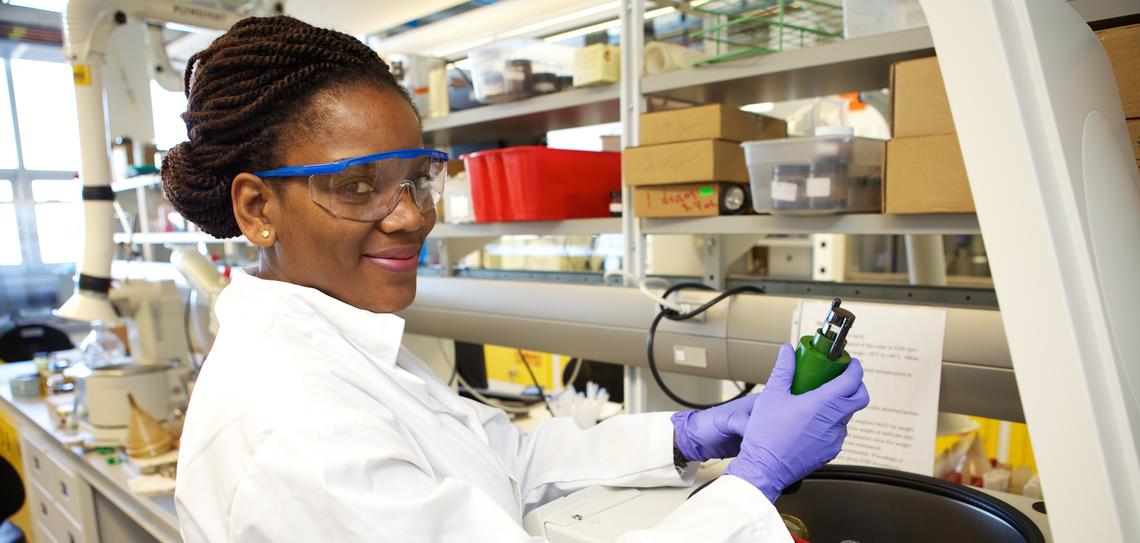
About Chemical and Petroleum Engineering
Transforming raw materials into products that are foundational to modern society
Traditional roles
Chemical engineers produce chemicals through reactions and/or separation processes. Traditional chemical engineering involves the conversion of wood to paper; sand to glass; crude oil and natural gas to plastics and fuels; intermediate chemicals into cloth fibres; and minerals into construction materials. Chemical engineers also make materials for air and water purification; produce pharmaceuticals, personal hygiene products and cosmetics; and make disinfectants, fertilizers and more.
Today's change leaders
Today, chemical engineers are taking us into the future - making significant contributions in microelectronics, energy conversion and storage, nanomaterials and composites, automation, biotechnology and beyond.
What oil and gas engineers do
Traditional roles
Oil and gas engineers create and use the technologies required to find, recover, and develop oil and gas products. Our students, faculty and researchers are revolutionizing the energy industry from the inside out.
Today's roles in sustainability
Oil and gas engineers are developing new solutions that reduce the carbon footprint of the global energy sector. Together with industry, they are developing a better understanding of underground reservoirs, and recovering petroleum in a safer, more economical and environmentally sustainable way.

Historical timeline
- 1966 - The Department of Chemical Engineering was established. Dr. Robert Ritter is appointed as the first department head. Construction on Engineering Blocks C and D are completed
- 1968 - Dr. Ritter is appointed as dean of the Faculty of Engineering. Dr. Matt Mohtadi becomes our department head
- 1970 - Dr. Peter Holst is the first to graduate with a doctorate from our department
- 1971 - Our first female chemical engineering student, Gillian Earl, graduates with a BSc. Dr. Eric Tollefson steps in as our acting department head
- 1972 - Dr. Eric Tollefson is appointed as our department head
- 1980 - Our name is changed to the Department of Chemical and Petroleum Engineering
- 1981 - Dr. Robert Heidemann is appointed as our department head
- 1983 - Dr. Roger Butler becomes the first endowed chair at the University of Calgary - the CIM Petroleum Society Chair in Petroleum Engineering
- 1986 - Dr. Gordon Moore is appointed as our acting department head
- 1987 - Dr. Robert Heidemann is appointed as our department head
- 1988 - Dr. Jana Simandl becomes the first female PhD graduate of the department
- 1990 - The department sets a new record for student enrollment: 143 undergraduates. Female student enrollment also hits a record of 32 students
- 1992 - Dr. Moore is appointed as our department head
- 1998 - We receive approval and funding for a new BSc program in oil and gas engineering
- 2000 - Dr. Anil Mehrotra is appointed as our acting department head and is later appointed as interim head in 2001
- 2004 - Dr. Tom Harding is appointed as our department head
- 2009 - Dr. Mehrotra again becomes our acting department head for nine months. Dr. U.T. Sundararaj is appointed as our department head
- 2014 - Dr. Ian Gates is appointed as our department head
- 2016 - The Canadian Natural Resources Limited Engineering Complex is opened - featuring advanced research and teaching facilities
- 2017 - Dr. Ayo Jeje is steps in as our interim department head
- 2018 - Dr. Anil Mehrotra becomes our acting department head
- 2019 - Dr. Arin Sen is appointed as our department head
- 2024 - Dr. Arin Sen is renewed as our department head
